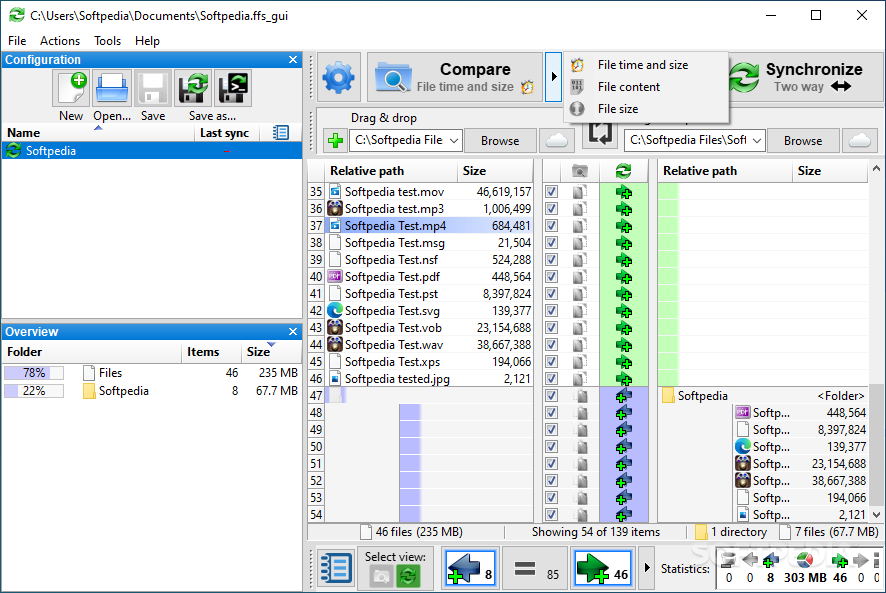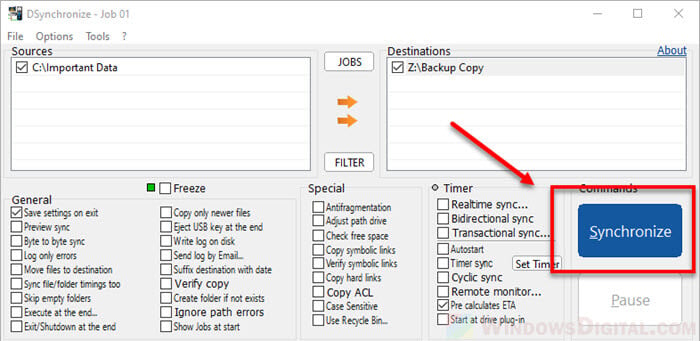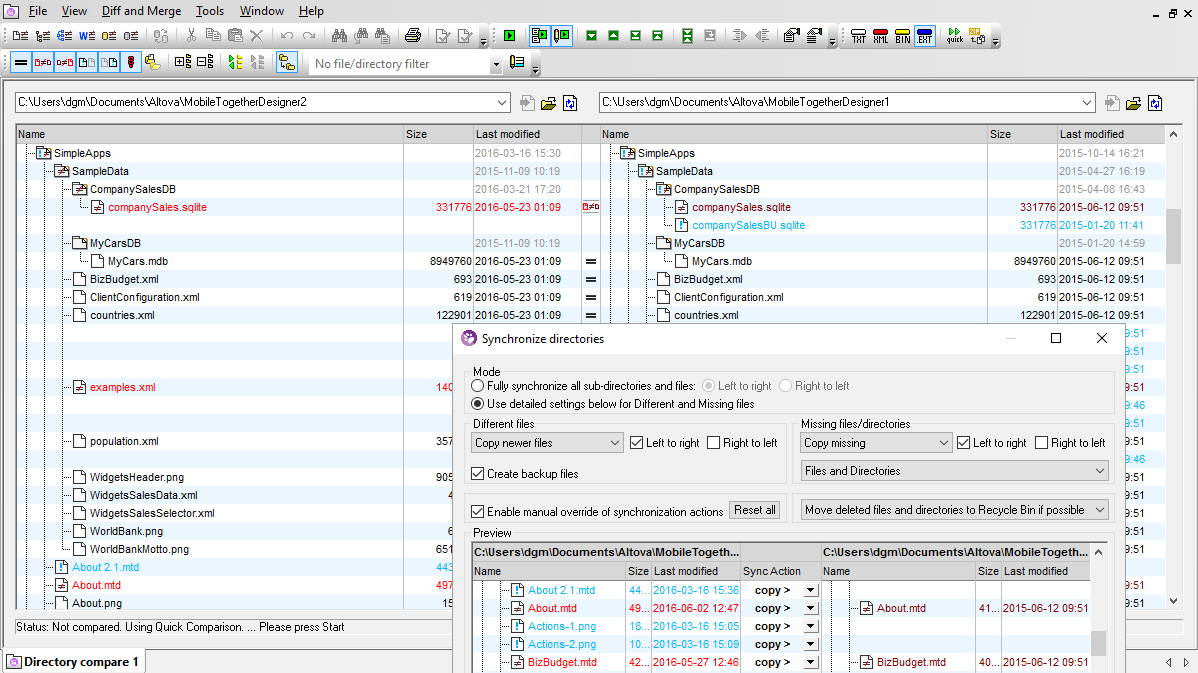

NAVIGATION Windows taskbar > Preferences > Preferences button > Folder Sync All other users may only sync folders within their operating system user profile. Administrators and Super Administrators may sync any item accessible to them. Not sure which version you have? Click here. Both offer much more advanced approaches to syncing folders with PowerShell.NOTE Available only in v8.x. If you’d like more in-depth information about syncing folders, we recommend checking out Steven Murawski’s blog post mentioned earlier or this blog post. However, we haven’t accounted for the complexities of removing and copying at the same time and subfolders as well. Using this kind of approach with PowerShell will allow you to keep both folders in sync. To do that, we simply have to remove all the files that Compare-Object finds. Now we’d like to remove that same file from $Folder1. In this example, we removed a file from $Folder2 and you can see that Compare-Object can tell this. What about file removals? Let’s say a file is removed from one of the folders and you’d like to remove the file in the other folder rather than copy the new one over? You’ll see that this works well but we’re not done. We’re then reading each of those files into foreach loop and checking to see which sides needs to copy from and to. You’ll see that we’re getting the output of Compare-Object that contains all the different files. To do this, we’ll have to create a script like the following.

We now need to copy whatever files Compare-Object finds to the folder that doesn’t contain the file. Compare-Object shows that newfile1234.xml is in $Folder1 but not in $Folder2. In the example, we created a dummy file in $Folder1 and now you can see the folders are out of sync. However, what happens when we add a file to one of the folders? Since both of our folders are in sync at the moment, this is what we see. If each collection is the same, it will output nothing. It will then look at each one and output which items are in the difference collection and which items in the reference collection are different.Ĭompare-Object -ReferenceObject $Folder1Files -DifferenceObject $Folder2Files Compare-Object allows you to specify two different collections. A great PowerShell cmdlet to do this is Compare-Object. $Folder2Files = Get-ChildItem -Path $Folder2Path $Folder1Files = Get-ChildItem -Path $Folder1Path This will give us two collections to compare. Next, we’ll have to discover everything in each of these folders. The first thing we’ll need to do is define the locations of each folder.įor demonstration purposes, we created these two folders and have placed 101 identical text files into each folder. However, we’ll still come out with a useful way you can sync files from one folder to another. We’ll be manually kicking off the script rather than using automatic triggers and we’ll be using basic PowerShell commands - no complicated. If you’re an advanced PowerShell scripter I recommend checking out Steven Murawski’s work on the Sync framework.įor today, we’ll just be covering the basics. Some methods have features like automatic triggers, file hashing and other advanced features but these methods would take much too long to go over in a short article. Syncing files with PowerShellįirst, as with everything in scripting, there are numerous ways to make this happen. This is what we’re going to be covering today. You can generally implement any feature you like as long as you have enough experience and time. By using PowerShell, you’re not boxed in by off the shelf software. This is why using a PowerShell script to accomplish syncing is the best option.
Folder compare and sync for mac software#
You can purchase software or even download free software, which will probably work well, but sometimes it might limit you in what you can achieve. Syncing involves reading the entire contents of a folder, reading the other contents of a folder, calculating the difference and then making a decision on which files to copy which way.

Essentially, syncing is just copying files but it’s smarter. But what if you want to ensure a complete replica of a folder rather than just copying some files from one folder to another? This is when you’ll need to sync the two folders. Simply drag them over across your window or use a simple command line like Copy-Item -Path C:Folder* -Destination SERVER2c$Folder2. Copying files from one folder to another is pretty easy.

Although there is software that will sync files and folders for you, even paid software can be limiting.


 0 kommentar(er)
0 kommentar(er)
